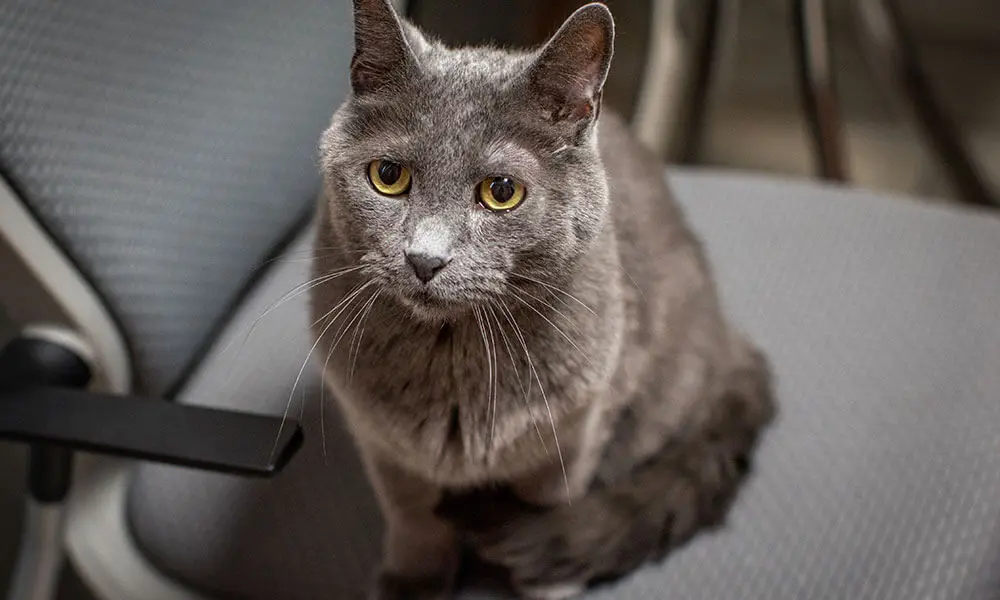There’s a dental disease that’s sweeping the cat population and is widely under-treated: feline tooth resorption. This painful condition is thought to affect around 40 percent of adult cats, but because many owners simply don’t know how to recognize its symptoms, cats don’t always receive the prompt treatment they need. Here’s what you need to know about feline tooth resorption as a cat owner.
What Is Feline Tooth Resorption?
Feline tooth resorption is a condition in which the body begins breaking down and absorbing the structures that form the tooth. The process usually starts in the enamel along the gum line and continues towards the center of the tooth. Eventually, the tooth will be almost entirely gone. All that will remain is a raised bump on the gums.
Sometimes feline tooth resorption leads to the appearance of a hole in the tooth. These holes are sometimes mistaken for cavities, but they differ from cavities in that they are caused by the body’s own biological processes rather than by bacteria. Cavities are actually quite rare in cats, so if you see what resembles a cavity in your cat’s tooth, it is likely a sign of feline tooth resorption.
What Are the Other Symptoms?
Feline tooth resorption is an extremely painful condition, but cats tend to hide pain. This is an instinctive defense mechanism that domestic cats have inherited from their wild ancestors. In the wild, a cat that showed signs of pain would be the one most targeted by predators. So, cats don’t typically cry out in pain until they’re seriously ill or near death. This means that as a cat owner, you need to be very aware of your cat’s behavior and look for subtle signs of feline tooth resorption, such as the following.
Difficulty Eating
Observe your cat while he or she eats. Does your cat turn his or her head to the side, drop food out of the side of the mouth, or seem to chew very slowly and cautiously? If you feed your pet dry food, your cat may start eating very little, which may lead to weight loss. Even cats on wet food diets may start leaving food behind when previously they would finish their meals.
Some cats with feline tooth resorption may stop eating when their owners and other pets are present. This may be because they’re aware that they show signs of pain when they eat and don’t want others to observe those signs of pain.
Behavioral Changes
Any strange change in behavior can be an indication of pain in a cat. Perhaps your cat has become less friendly and no longer wants to sleep with you at night. Maybe he or she has stopped climbing on the cat tower or playing with a favorite toy. If you notice any odd changes in behavior, it’s worth taking your cat to the vet for a checkup. Any number of painful conditions, from feline tooth resorption to arthritis, could be to blame.
Bleeding and Other Oral Symptoms
Many cats with feline tooth resorption will be unwilling to let you look in their mouth, due to pain. However, if you can manage to take a look in your cat’s mouth, you may notice blood along the gum line. You may also notice that your cat drools excessively, even when he or she has not been eating.
Since the resorption lesions often appear on the gum line or just below it, you won’t always see them until the condition is quite severe. When they are visible, they can look like a hole in the tooth or a dark, pink stain down the center of the tooth.
What Should You Do?
Start by scheduling an appointment with your vet. If resorptive lesions are suspected, he or she can sedate your cat with anesthesia in order to get a more thorough look inside the mouth and perform a dental cleaning. Dental x-rays should also be performed while your pet is sleeping to evaluate the extent of the damage below the gum line. Other oral conditions like gum disease, periodontal disease and oral cancer will be evaluated.
Once your vet has a better idea of the severity of your cat’s case, he or she will devise a treatment protocol, which may include the following.
Filling Minor Lesions
If the condition is caught early on and the lesions are small, your vet may fill the lesions in the teeth much like your dentist would fill a cavity. This should reduce your cat’s discomfort, but it probably won’t eliminate the condition entirely. It’s more of a temporary fix; a few years down the road, your cat may need to have the affected teeth removed.
Extracting the Affected Teeth
In most cases, it is best to simply extract the affected teeth before the pain gets any worse. In moderate to severe cases of feline tooth resorption, the teeth becomes quite fragile and tends to crack during extraction. So, your vet may refer you to a veterinary dental specialist for the extractions. Once the affected teeth have been removed and your cat’s mouth has had a week or two to heal, he or she will be much more comfortable.
Feeding a Modified Diet
If your cat has had multiple extractions, to ensure your cat is able to eat comfortably, your vet may recommend switching your cat over to a wet food diet. Some research has indicated that the high levels of vitamin D in many commercial cat foods may be contributing to the prevalence of feline tooth resorption. For this reason, your vet may recommend a cat food that’s known to be lower in vitamin D.
If your cat is showing signs of dental problems, don’t delay seeking veterinary care. Feline tooth resorption is the most common dental condition in cats, and it’s a painful one, so you want to ensure its dealt with promptly.

